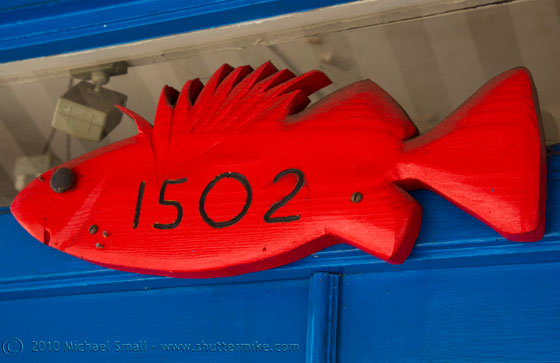I wrote about the ZeissImages.com Photo Contest being put on by the infamous lens manufacturer Zeiss back in June. The theme of the photography contest was “As Seen Through Your Eyes” and Zeiss has recently announced the winners. The first prize photo won a Zeiss 50mm 1.4 Planar lens and is titled “trainstation.” It is a very neatly composed black and white of just that, a train station. You can view the image here. All the winner’s can be seen on the ZeissImages.com features page.
While you are at the site check out their gallery of photos taken with Zeiss lenses. There are some great images here.
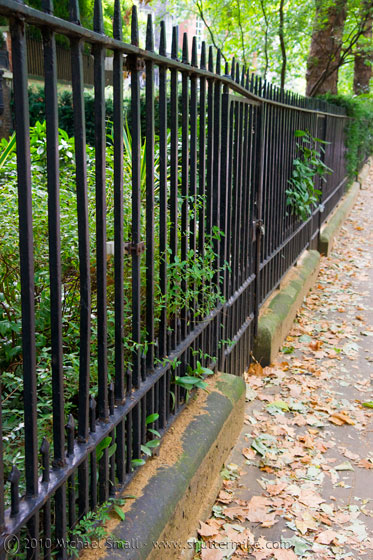 Iron Fences
f/6.3 – 1/50 sec – ISO 1000 – Focal Length 45 mm
Iron Fences
f/6.3 – 1/50 sec – ISO 1000 – Focal Length 45 mm
Wrought iron fences such as this are prevalent in London. They often have thick layers of shiny black paint that have piled up with over a century of repainting. Some are more elaborate and some are a simple pattern such as this one in the Buckingham Palace area of London. The lines of a fence like this make for some great repeating and leading lines.
I have been absent from posting lately because I was on vacation in Europe. I am hoping the neglect of my blog is offset by all the awesome travel photography opportunities I had and the resulting photographs. It is going to take me some time to sort through them all but to get things started here is a very English image from Buckingham Palace.
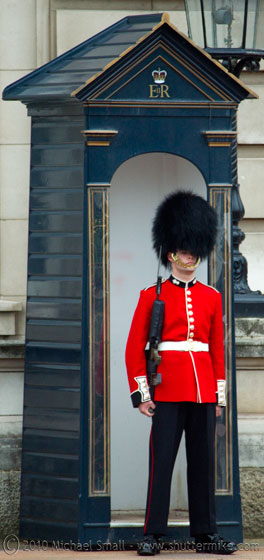
Palace Guard
Buckingham Palace, London, England
f/8.0 – 1/320 sec – ISO 640 – Focal Length 300 mm
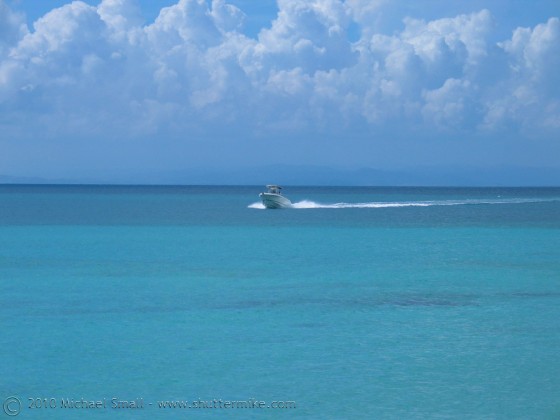
Paradise
Vieques, Puerto Rico
f/5.0 – 1/1250 sec – Focal Length 28 mm
This photo is a few years old and I have not been here is a while. But, Vieques, an island off the coast of Puerto Rico, is someplace I could spend forever.
The story of the California man who bought some negatives at a Fresno garage sale that he and others report to be the long lost work of Ansel Adams and worth $200 million has taken another turn. According to the LA Times, The Center for Creative Photography at the University of Arizona in Tucson, a long standing authority on the work of Ansel Adams and home to all 44,000 of his original negatives, has stated that they have no reason to believe the garage sale negatives are the work of Adams. This certainly does not help the case that a $45 garage sale find is not worth $200 million. But it probably will not dash the hopes of bargain hunters hoping to find the next long lost work of art that has been hidden away in someone’s attic for 50 years.
I have always found portrait photography one of the most challenging types of photography. For the most part that is because I do so little of it and practice, practice, practice is what makes you better at any type of photography. So I have been practicing more lately with any willing models I can find.
Here are a few tips to help improve your portrait photography that I have discovered along the way.
1) Pay as much attention to the background as you do to the model. A busy background can draw attention away from the model. Objects positioned just right (or wr0ng) can look like they grow out of the models head. If necessary move your model or if possible use a shallow depth of field to blur out your background.
2) As with all photography lighting is key. But when photographing people there are no constants with lighting. Skin tones, clothing, the setting; these all need to be taken into consideration when you are lighting your subject. I prefer ambient lighting when shooting outdoors. But in a studio play around with your lighting (even if you don’t have professional studio lighting) to make sure you are seeing your model in their best light.
3) Every model is different, especially when it comes to children versus adults. Some people are more comfortable in front of the camera than others and you need to feel out their comfort level and work with it. Suggest poses and let them come up with their own if they want. Don’t force a smile; if it does not come naturally it will look forced on the final image. Above all, just do what comes natural to your model.
These images are from a photo shoot I did with my niece using a seamless back drop and studio lighting in some and an outdoor setting with natural lighting in some.

Studio Lighting
f/5.6 – 1/15 sec – ISO 200 – Focal Length 60 mm

Studio Lighting
f/5.6 – 1/10 sec – ISO 200 – Focal Length 35 mm

Natural Outdoor Lighting
Note the background. I like how the square pattern of the fence compliments
the plaid of her shirt yet it is blurred out enough so as not to be too much
of a distraction from the model.
f/5.6 – 1/60 sec – ISO 200 – Focal Length 200 mm

Natural Outdoor Lighting
f/5.6 – 1/100 sec – ISO 200 – Focal Length 200 mm
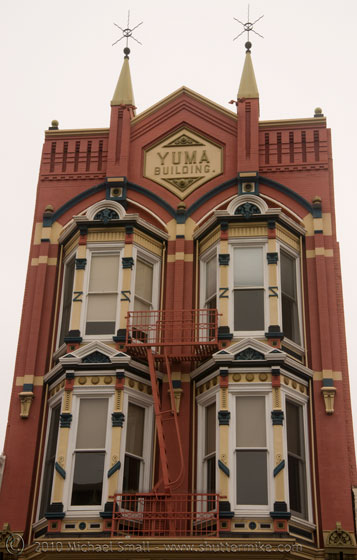 Yuma Building
f/14 – 1/50 sec – ISO 200 – Focal Length 55mm
Yuma Building
f/14 – 1/50 sec – ISO 200 – Focal Length 55mm
Built in 1888 (although some sources list it as being built in 1886, so let’s say 1886-1888), the Yuma Building was downtown San Diego’s first brick building. It was built by Captain Wilcox and named after the town of Yuma, AZ because of the Captain’s business dealings in Yuma. The building’s real claim to fame came in 1912 when it was a “hotel” (aka brothel) and it got the distinction of being the first red light district business to be shut down during an attempt to clean up San Diego’s area of ill-repute.
 Iron Fences
f/6.3 – 1/50 sec – ISO 1000 – Focal Length 45 mm
Iron Fences
f/6.3 – 1/50 sec – ISO 1000 – Focal Length 45 mm


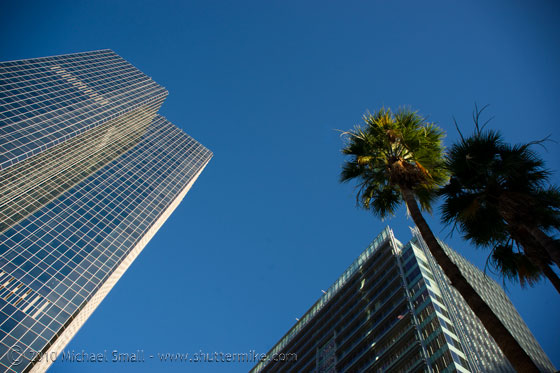 Upwards
f/10.0 – 1/80 sec – ISO 100 – Focal Length 28 mm
Upwards
f/10.0 – 1/80 sec – ISO 100 – Focal Length 28 mm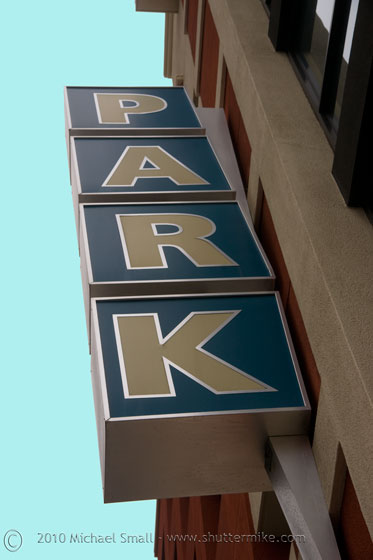 Parking
f/8.0 – 1/160 sec – ISO 200 – Focal Length 60 mm
Parking
f/8.0 – 1/160 sec – ISO 200 – Focal Length 60 mm



 Yuma Building
f/14 – 1/50 sec – ISO 200 – Focal Length 55mm
Yuma Building
f/14 – 1/50 sec – ISO 200 – Focal Length 55mm
